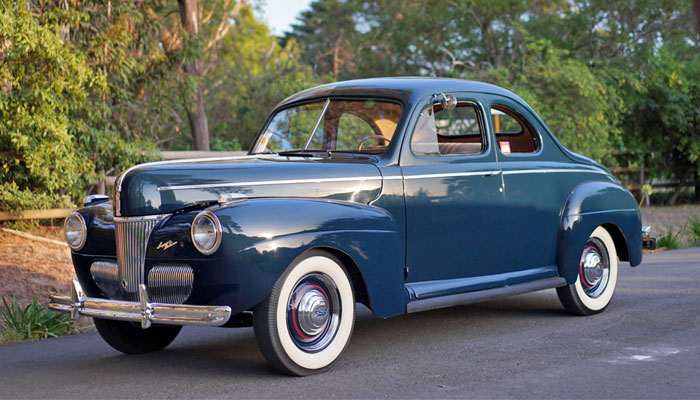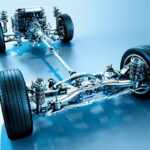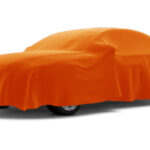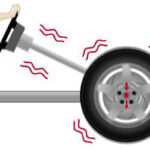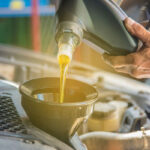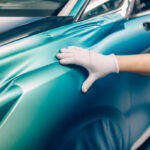In 1944, the world was in the midst of World War II, which had a profound impact on nearly every industry, including the automobile sector. With the war effort taking priority, car manufacturing was heavily scaled back as automakers shifted their focus to producing military vehicles, aircraft, and other equipment to support the war. As a result, the availability of new cars for the general public was extremely limited, making it difficult to pinpoint a specific “most popular car” in a traditional sense. However, some pre-war cars and a few military models dominated the landscape during this period.
The Automobile Industry During World War II
By 1942, most U.S. automakers had halted civilian car production. Companies like Ford, Chevrolet, Chrysler, and others converted their factories to produce military goods such as tanks, jeeps, trucks, and aircraft. Civilian car production was paused until after the war ended in 1945, so people were primarily relying on cars manufactured before the war.
Gasoline rationing, tire shortages, and other wartime restrictions also limited how much people could use their cars, further reducing the demand for new vehicles. But despite these limitations, some cars remained in use, and certain models continued to be popular due to their reliability and availability before the war.
Pre-War Models Still on the Road
Since new car production was essentially non-existent in 1944, many people relied on cars that had been made in the late 1930s or early 1940s. These pre-war vehicles became the backbone of personal transportation in the U.S. and other countries.
Ford Deluxe
The Ford Deluxe, introduced in the 1930s, was one of the most popular cars on the road during the early 1940s. It was available in a variety of body styles, including sedans, coupes, and convertibles. Known for its affordability, durability, and relatively modern features, the Ford Deluxe was a staple for many families before the war. It featured a V8 engine, which gave it decent performance for its time.
By 1944, the Ford Deluxe was still in wide use, as people were relying on older cars due to the lack of new ones being produced. It became a workhorse for families needing transportation, making it one of the most common cars during the war years.
Chevrolet Master and Special Deluxe
Chevrolet’s Master and Special Deluxe models were also prominent on the roads in 1944. Both models were affordable, practical, and widely available before the war, making them a popular choice among American consumers. The Special Deluxe, introduced in 1940, was the more luxurious version, featuring chrome detailing, improved interiors, and more advanced mechanical features.
Like the Ford Deluxe, these Chevrolet models were used extensively during the war years. They were known for their reliability, which was especially important at a time when car maintenance and repairs could be challenging due to shortages of parts and mechanics.
Military Vehicles in Civilian Life
While civilian car production was on hold, military vehicles were being produced in large quantities. Some of these vehicles, particularly Jeeps and trucks, began to be used in civilian life, either by military personnel or after the war when surplus vehicles were sold to the public.
The Jeep: A Wartime Icon
One of the most iconic vehicles of the World War II era was the Jeep. Originally designed as a light reconnaissance vehicle for the military, the Jeep became known for its ruggedness and versatility. It could navigate rough terrain, was easy to repair, and could be used for a variety of purposes.
Although not technically a civilian car, the Jeep’s popularity during and after the war cannot be ignored. It became a symbol of American ingenuity and toughness and played a crucial role in the war effort. After the war, civilian versions of the Jeep became available, but even during the war, some people in rural areas and military personnel were using Jeeps for everyday tasks.
Military Trucks
Military trucks also became a common sight during the war years. These trucks were used for transporting goods, equipment, and personnel. While they were primarily built for military purposes, some found their way into civilian use, particularly in rural areas where heavy-duty transportation was needed.
The Impact of Rationing and Shortages
Wartime rationing and shortages had a major impact on car ownership and usage in 1944. Gasoline was strictly rationed, making it difficult for people to drive frequently, even if they had a car. Tires were also in short supply, which meant that many people were forced to limit their car use or rely on other forms of transportation.
Because of these limitations, people who owned cars during the war years often took great care of them. Maintenance was critical, as new parts were hard to come by. Mechanics were in high demand, and many people learned how to make basic repairs to their cars to keep them running as long as possible.
Post-War Revival
By 1944, people were looking ahead to the end of the war and the return of normalcy. Automakers were already making plans to restart civilian car production once the war ended, and there was a great deal of excitement about the new models that would be introduced in the late 1940s.
Many of the cars that had been popular before the war, like the Ford Deluxe and Chevrolet Special Deluxe, continued to hold their value, and those who had them maintained them carefully. After the war, these brands remained leaders in the market, with new models that reflected the changing tastes and technologies of the time.
Conclusion
In 1944, the most popular cars were those that had been produced before the war, such as the Ford Deluxe and Chevrolet Special Deluxe. These cars, known for their reliability and affordability, remained in use because new car production had been halted. Military vehicles like Jeeps and trucks also played a role in transportation during this period, though they were not designed for civilian use. Wartime shortages and rationing limited car usage, but people continued to rely on their vehicles for essential travel. Despite the challenges, the automobile remained a crucial part of life, and the end of the war promised a revival of the industry and the introduction of new models.
